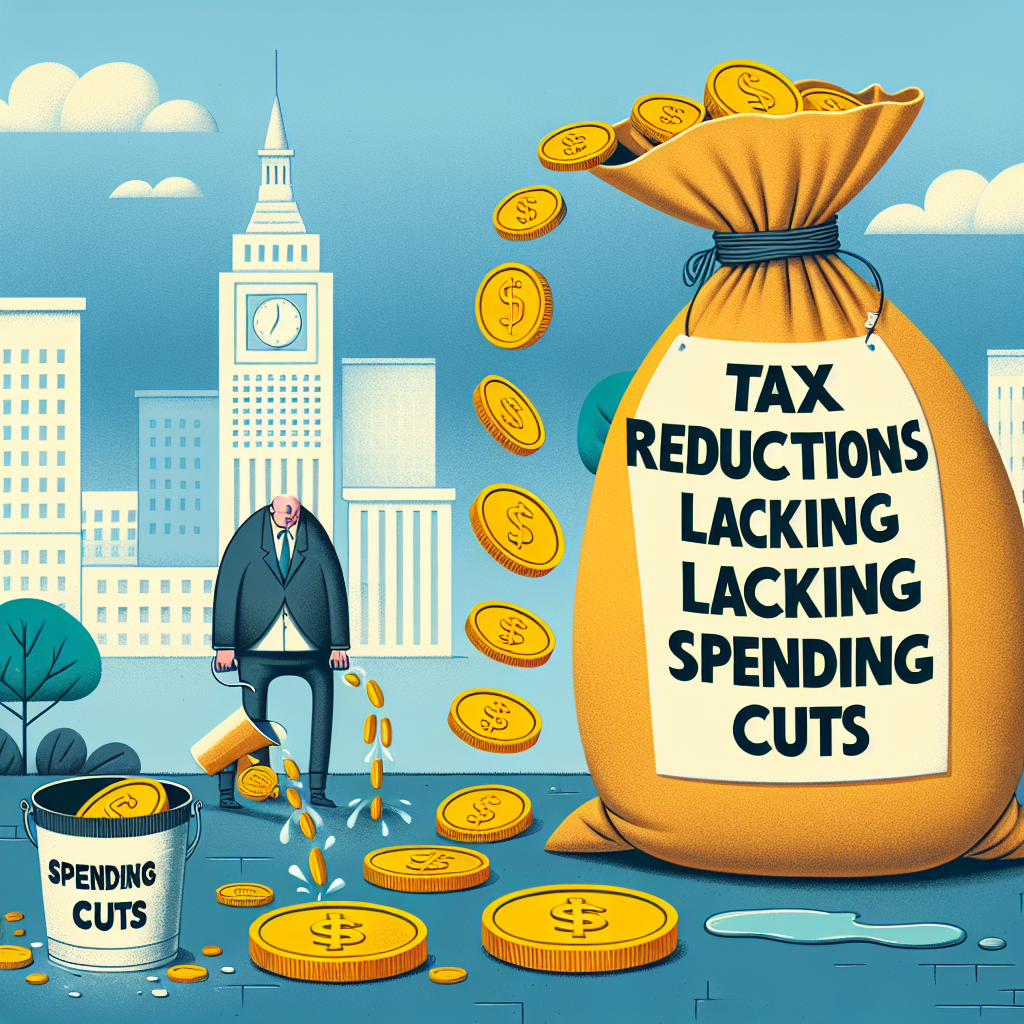The current election cycle has once again highlighted the contrasting approaches of Democrats and Republicans when it comes to taxation and government spending. Democrats have consistently advocated for tax increases, targeting corporate taxes and taxes on unrealized capital gains as part of their economic strategy. In contrast, Donald Trump has positioned himself as a proponent of tax cuts for Americans, while also signaling an intention to increase taxes on imports. However, despite the promise of tax reductions, Trump’s lack of concrete plans to cut government spending raises questions about the potential effectiveness of his tax relief proposals. Tax cuts, without corresponding reductions in spending, do not truly alleviate the fiscal burden on taxpayers; rather, they merely alter how that burden is distributed.
The fundamental flaw in Trump’s approach lies in the relationship between tax cuts and government spending. When taxes are reduced but spending remains unchanged, the government continues to operate at a deficit, which ultimately shifts the financial burden to taxpayers. Deficit spending is typically financed through future taxes, interest payments, or money creation. In the 2024 fiscal year, taxpayers faced approximately $900 billion in interest payments due to accumulated federal debt. This staggering sum is the result of prior government expenditures exceeding revenue, illustrating the adverse impact of deficit-driven fiscal policies on the taxpayer’s wallet.
To manage the costs associated with government debt, federal authorities have manipulated interest rates, primarily through interventions by the central bank. By purchasing government debt, the central bank artificially lowers interest rates, which ostensibly reduces the immediate financial burden of debt. However, this practice leads to significant long-term consequences: the printing of money to finance these purchases generates monetary inflation, resulting in higher prices for consumers. Thus, tax cuts that increase deficits may create the illusion of financial relief but ultimately impose new and often hidden burdens on taxpayers.
Critically, the relationship between taxation and government spending should not be oversimplified; they are two interdependent components of a larger economic process. Murray Rothbard, in “Man, Economy, and State,” emphasized this connection, arguing that spending without corresponding taxes leads to inflationary pressures and market distortions. Government expenditure siphons resources away from the private sector; when the government allocates funds to purchase goods or services, it bids against private enterprises for those resources. This competition drives up prices, distorting market signals and creating inefficiencies—benefiting government employees and contractors at the expense of those not favored by government largesse.
The implications of unchecked government spending are profound, particularly for the private sector. The act of taxing and subsequently reallocating those funds through government spending does not merely shift resources; it actively disrupts economic equilibrium and engenders winners and losers within the market. As a result, industries that might thrive without government involvement may suffer or be entirely extinguished due to manipulated resource allocation. In this light, excessive government expenditures become a significant burden, regardless of whether they are funded through direct taxation or borrowing, as the true cost is borne by consumers in the form of inflated prices and diminished economic opportunity.
In conclusion, any political rhetoric surrounding tax cuts must be scrutinized alongside proposals for government spending. Promising tax relief while simultaneously endorsing increased government expenditures creates a deceptive political narrative that perpetuates fiscal mismanagement. The ultimate focus should be on reducing government spending to foster genuine economic freedom and stability. Politicians must be pressed to articulate clear plans for spending cuts and specific reductions in government programs; failing to do so indicates a disconnection from the realities faced by taxpayers. By shifting the focus from mere tax promises to substantive fiscal responsibility, voters can foster a more transparent and accountable governance that prioritizes the long-term health of the economy.

